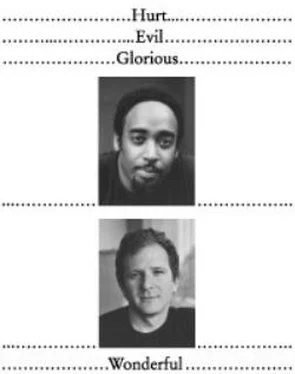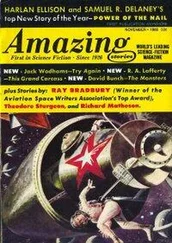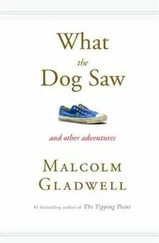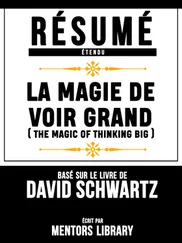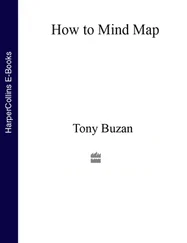Malcolm Gladwell - Blink - The Power of Thinking Without Thinking
Здесь есть возможность читать онлайн «Malcolm Gladwell - Blink - The Power of Thinking Without Thinking» весь текст электронной книги совершенно бесплатно (целиком полную версию без сокращений). В некоторых случаях можно слушать аудио, скачать через торрент в формате fb2 и присутствует краткое содержание. Жанр: Культурология, Психология, на английском языке. Описание произведения, (предисловие) а так же отзывы посетителей доступны на портале библиотеки ЛибКат.
- Название:Blink: The Power of Thinking Without Thinking
- Автор:
- Жанр:
- Год:неизвестен
- ISBN:нет данных
- Рейтинг книги:3 / 5. Голосов: 1
-
Избранное:Добавить в избранное
- Отзывы:
-
Ваша оценка:
- 60
- 1
- 2
- 3
- 4
- 5
Blink: The Power of Thinking Without Thinking: краткое содержание, описание и аннотация
Предлагаем к чтению аннотацию, описание, краткое содержание или предисловие (зависит от того, что написал сам автор книги «Blink: The Power of Thinking Without Thinking»). Если вы не нашли необходимую информацию о книге — напишите в комментариях, мы постараемся отыскать её.
Blink: The Power of Thinking Without Thinking — читать онлайн бесплатно полную книгу (весь текст) целиком
Ниже представлен текст книги, разбитый по страницам. Система сохранения места последней прочитанной страницы, позволяет с удобством читать онлайн бесплатно книгу «Blink: The Power of Thinking Without Thinking», без необходимости каждый раз заново искать на чём Вы остановились. Поставьте закладку, и сможете в любой момент перейти на страницу, на которой закончили чтение.
Интервал:
Закладка:
Ironically, a big chunk of the funding for Goldman’s initial research had come not from the medical community itself but from the navy. Here was a man trying to come up with a way to save lives and improve the quality of care in every hospital in the country and save billions of dollars in health care costs, and the only group that got excited was the Pentagon. Why? For the most arcane of reasons: If you are in a submarine at the bottom of the ocean, quietly snooping in enemy waters, and one of your sailors starts suffering from chest pain, you really want to know whether you need to surface (and give away your position) in order to rush him to a hospital or whether you can stay underwater and just send him to his bunk with a couple of Rolaids.
But Reilly shared none of the medical community’s qualms about Goldman’s findings. He was in a crisis. He took Goldman’s algorithm, presented it to the doctors in the Cook County ED and the doctors in the Department of Medicine, and announced that he was holding a bake-off. For the first few months, the staff would use their own judgment in evaluating chest pain, the way they always had. Then they would use Goldman’s algorithm, and the diagnosis and outcome of every patient treated under the two systems would be compared. For two years, data were collected, and in the end, the result wasn’t even close. Goldman’s rule won hands down in two directions: it was a whopping 70 percent better than the old method at recognizing the patients who weren’t actually having a heart attack. At the same time, it was safer. The whole point of chest pain prediction is to make sure that patients who end up having major complications are assigned right away to the coronary and intermediate units. Left to their own devices, the doctors guessed right on the most serious patients somewhere between 75 and 89 percent of the time. The algorithm guessed right more than 95 percent of the time. For Reilly, that was all the evidence he needed. He went to the ED and changed the rules. In 2001, Cook County Hospital became one of the first medical institutions in the country to devote itself full-time to the Goldman algorithm for chest pain, and if you walk into the Cook County ER, you’ll see a copy of the heart attack decision tree posted on the wall.
Why is the Cook County experiment so important? Because we take it, as a given, that the more information decision makers have, the better off they are. If the specialist we are seeing says she needs to do more tests or examine us in more detail, few of us think that’s a bad idea. In Millennium Challenge, Blue Team took it for granted that because they had more information at their fingertips than Red Team did, they had a considerable advantage. This was the second pillar of Blue Team’s aura of invincibility. They were more logical and systematic than Van Riper, and they knew more. But what does the Goldman algorithm say? Quite the opposite: that all that extra information isn’t actually an advantage at all; that, in fact, you need to know very little to find the underlying signature of a complex phenomenon. All you need is the evidence of the ECG, blood pressure, fluid in the lungs, and unstable angina.
That’s a radical statement. Take, for instance, the hypothetical case of a man who comes into the ER complaining of intermittent left-side chest pain that occasionally comes when he walks up the stairs and that lasts from five minutes to three hours. His chest exam, heart exam, and ECG are normal, and his systolic blood pressure is 165, meaning it doesn’t qualify as an urgent factor. But he’s in his sixties. He’s a hard-charging executive. He’s under constant pressure. He smokes. He doesn’t exercise. He’s had high blood pressure for years. He’s overweight. He had heart surgery two years ago. He’s sweating. It certainly seems like he ought to be admitted to the coronary care unit right away. But the algorithm says he shouldn’t be. All those extra factors certainly matter in the long term. The patient’s condition and diet and lifestyle put him at serious risk of developing heart disease over the next few years. It may even be that those factors play a very subtle and complex role in increasing the odds of something happening to him in the next seventy-two hours. What Goldman’s algorithm indicates, though, is that the role of those other factors is so small in determining what is happening to the man right now that an accurate diagnosis can be made without them. In fact—and this is a key point in explaining the breakdown of Blue Team that day in the Gulf—that extra information is more than useless. It’s harmful. It confuses the issues. What screws up doctors when they are trying to predict heart attacks is that they take too much information into account.
The problem of too much information also comes up in studies of why doctors sometimes make the mistake of missing a heart attack entirely—of failing to recognize when someone is on the brink of or in the midst of a major cardiac complication. Physicians, it turns out, are more likely to make this kind of mistake with women and minorities. Why is that? Gender and race are not irrelevant considerations when it comes to heart problems; blacks have a different overall risk profile than whites, and women tend to have heart attacks much later in life than men. The problem arises when the additional information of gender and race is factored into a decision about an individual patient. It serves only to overwhelm the physician still further. Doctors would do better in these cases if they knew less about their patients—if, that is, they had no idea whether the people they were diagnosing were white or black, male or female.
It is no surprise that it has been so hard for Goldman to get his ideas accepted. It doesn’t seem to make sense that we can do better by ignoring what seems like perfectly valid information. “This is what opens the decision rule to criticism,” Reilly says. “This is precisely what docs don’t trust. They say, ‘This process must be more complicated than just looking at an ECG and asking these few questions. Why doesn’t this include whether the patient has diabetes? How old he is? Whether he’s had a heart attack before?’ These are obvious questions.
They look at it and say, ‘This is nonsense, this is not how you make decisions.’” Arthur Evans says that there is a kind of automatic tendency among physicians to believe that a life-or-death decision has to be a difficult decision. “Doctors think it’s mundane to follow guidelines,” he says. “It’s much more gratifying to come up with a decision on your own. Anyone can follow an algorithm. There is a tendency to say, ‘Well, certainly I can do better. It can’t be this simple and efficient; otherwise, why are they paying me so much money?’” The algorithm doesn’t feel right.
Many years ago a researcher named Stuart Oskamp conducted a famous study in which he gathered together a group of psychologists and asked each of them to consider the case of a twenty-nine-year-old war veteran named Joseph Kidd. In the first stage of the experiment, he gave them just basic information about Kidd. Then he gave them one and a half single-spaced pages about his childhood. In the third stage, he gave each person two more pages of background on Kidd’s high school and college years. Finally, he gave them a detailed account of Kidd’s time in the army and his later activities. After each stage, the psychologists were asked to answer a twenty-five-item multiple-choice test about Kidd. Oskamp found that as he gave the psychologists more and more information about Kidd, their confidence in the accuracy of their diagnoses increased dramatically. But were they really getting more accurate? As it turns out, they weren’t. With each new round of data, they would go back over the test and change their answers to eight or nine or ten of the questions, but their overall accuracy remained pretty constant at about 30 percent.
Читать дальшеИнтервал:
Закладка:
Похожие книги на «Blink: The Power of Thinking Without Thinking»
Представляем Вашему вниманию похожие книги на «Blink: The Power of Thinking Without Thinking» списком для выбора. Мы отобрали схожую по названию и смыслу литературу в надежде предоставить читателям больше вариантов отыскать новые, интересные, ещё непрочитанные произведения.
Обсуждение, отзывы о книге «Blink: The Power of Thinking Without Thinking» и просто собственные мнения читателей. Оставьте ваши комментарии, напишите, что Вы думаете о произведении, его смысле или главных героях. Укажите что конкретно понравилось, а что нет, и почему Вы так считаете.
